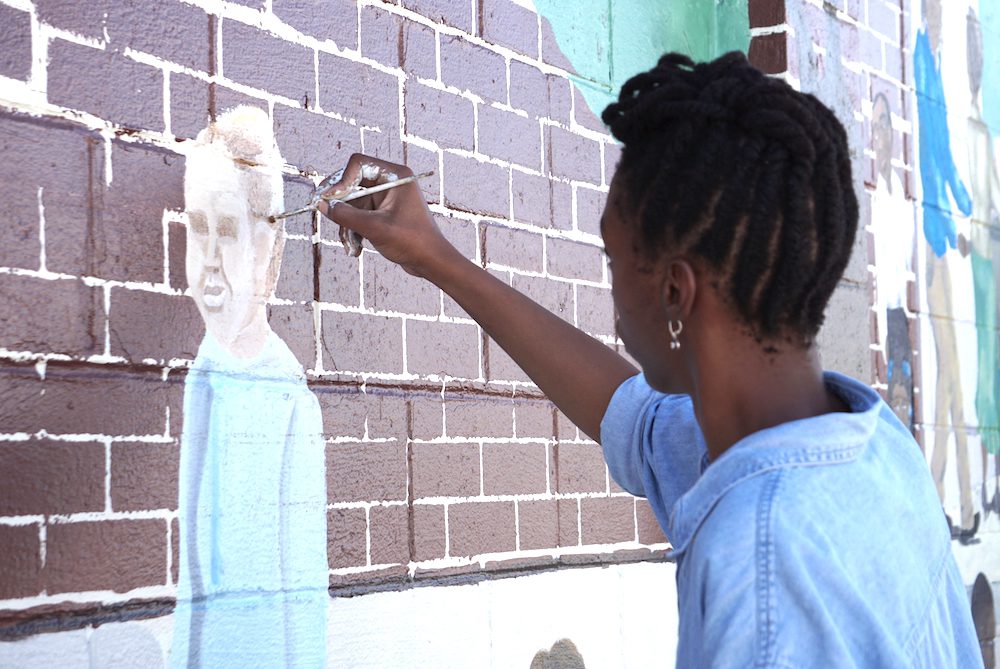A Place for Us: How To Make Society Civil and Democracy Strong by Benjamin Barber. Hill and Wang, 1998. 172 pp.
Between the two great domains of power in the modern world – government and corporations – lies the civil society, a domain that has been neglected, overlooked, and often maliciously deprived by its bigger, more powerful brothers.
According to Benjamin Barber, director of Rutgers University’s Walt Whitman Center for the Culture and Politics of Democracy and author of numerous books including Jihad vs. McWorld (1995), civil society “suggests an independent domain of free social life where neither governments nor private markets are sovereign; a realm we create for ourselves through associated common action in families, clans, churches, and communities; a ‘third sector’ that mediates between our individuality as economic producers and consumers and our abstract collectivity as members of a sovereign people.”
The Strong Democratic Perspective
A Place for Us seeks to develop a progressive and democratic interpretation of civil society, especially useful “to those who are partisans of democratic struggle and social justice,” and to “offer a series of concrete proposals and strategies aimed at reestablishing institutions and practices at the heart of a strong, democratic civil society.”
The strong democratic perspective sees civil society as severely withered and requiring rehabilitation. It rejects the diametric opposition of public and private sectors and posits civil society as a mediating third sector, defined by its civic communities or voluntary membership associations.
Building a strong civil society requires a clear idea of what it is and a clear notion of the pitfalls to avoid in helping it develop. “To imagine how a vigorous, civic republican, civil society looks, we may want to think about the actual places Americans occupy as they go about their daily lives, when they are engaged neither in politics (voting, jury service, paying taxes) nor in commerce (working for pay, producing, shopping, consuming). Such activities include going to church or synagogue or mosque, doing volunteer work, participating in a civic association, supporting a philanthropy, joining a fraternal organization, contributing to a charity, working in a parent-teacher group or neighborhood watch or hospital fundraising society, or joining with neighbors to clean a local park, and, of course, engaging in family affairs.”
Strengthening civil society, however, is a difficult and delicate matter. Barber proposes many arenas for legislative action to energize civil society. Some of these ideas have to do with recreating public space: “Enlarging and reinforcing public spaces: specifically, retrofitting commercial malls as multi-use and thus genuinely public spaces.” Others have to do with using advances in technology to promote communication, and “preventing commercialization from destroying their civic potential.” He also suggests developing national community service programs and service learning programs for college students.
Barber outlines a “Corporate Civic Compact for Private Sector Citizens” that would bind corporate managers and citizens to a set of principles including respect for civil society’s noncommercial character, support for civic diversification of public space, encouragement of worker participation and share-holding, establishment of compensation standards limiting the ratio of executive salaries to worker’s wages, etc.
Time, Work and Leisure
The changing nature of work plays a role in the struggle against unchecked corporate and government power. Barber points out that “one-third of the working force work more than 45 hours a week, up from one-quarter just a few years ago.” This cuts into the time people have to participate in civil society and shape their environment’s political and social contours. As Barber succinctly notes “work, leisure, and civil society compete for a single scarce resource: time.”
Why, in a society in which productivity has tripled in the past 50 years, are we working so much? Why don’t we have time to spend with our children, talk to our neighbors, and build social and political networks?
The nature of time and work is a key issue Barber avoids until the final chapter, when he then rushes to make a point: we need to break from the traditional relationship between labor and income. At this time in the history of human development, increasingly efficient production has created the first real possibility of liberation from work. He sees a chance for a “post-modern hyper-efficient economy” being transformed into “the promise of a civil society, a leisure society in which civic culture is finally cut loose from commerce and made the focus of citizens liberated from work.”
Barber, however, is not overly optimistic about our ability to realize such a vision. He states, “The decoupling of consumption and production through increased labor productivity and the intervention of efficient machines, if it comes to pass as historical actuality, is likely to be disruptive rather than utopian, a prelude to global unemployment and the spread of poverty rather than to global freedom and the spread of a civic culture in which human beings loosen the bonds of nature and truly become its lords.”
That is the future as long as the world is ruled by corporations and their global umbrella organizations like the World Trade Organization, and by governments not driven by their peoples’ interests. The point is that “our society is moving toward conditions that could nourish the resuscitation of civil society” but to make it so requires “acts of bold political imagination and moral transformation.”



Comments